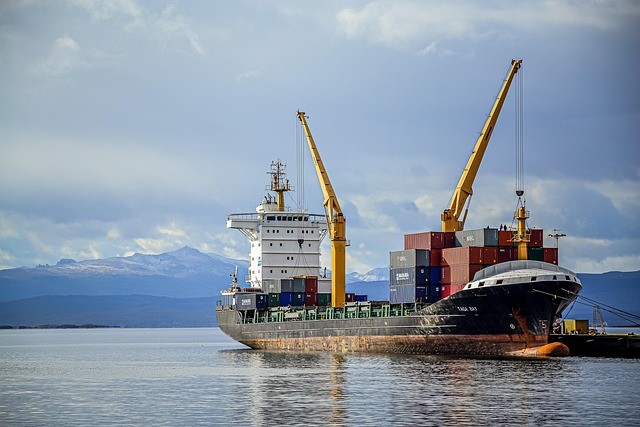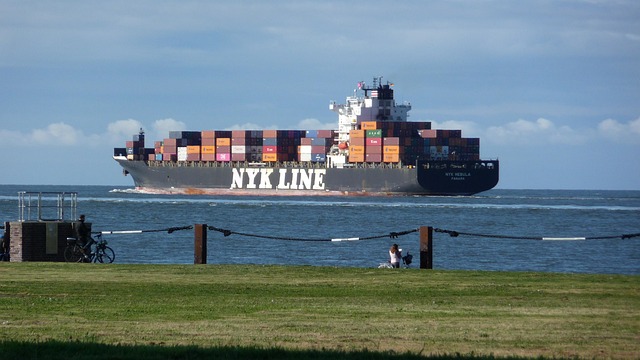Stackable shipping containers revolutionize warehouse management by optimizing space utilization through flexible dimensions and organized stacking. Businesses benefit from cost-effective leasing and rental services, diverse container types (ISO, refrigerated, flat rack), and improved accessibility for various cargo needs, especially in urban or space-constrained warehouses. Best practices include strategic placement, leveling equipment, color-coding, regular maintenance, and using specific container types based on storage requirements.
Stackable shipping containers are transforming warehouse management by maximizing space utilization. In today’s dynamic logistics landscape, optimizing storage is crucial for efficiency and cost-saving. This article delves into the world of stackable shipping containers, exploring their unique benefits and providing implementation strategies for warehouses. Understand how these versatile units can revolutionize your facility, offering increased capacity, improved organization, and enhanced operational flexibility. Discover best practices to harness the full potential of stackable containers, ensuring a seamless transition towards an optimized warehouse environment.
- Understanding Stackable Shipping Containers
- Benefits of Using Stacking for Warehouse Space
- Implementation Strategies and Best Practices
Understanding Stackable Shipping Containers

Stackable shipping containers are a game-changer when it comes to optimizing warehouse space utilization. These specialized containers, often referred to as intermodal or cargo containers, are designed for versatile and efficient storage and transportation of goods. By taking advantage of their stackable nature, warehouses can maximize vertical space, leading to significant cost savings and improved operational efficiency.
Whether you’re dealing with a standard ISO container, a high-cube container, or specialized options like refrigerated, flat rack, or open top containers, each has its unique dimensions and capacities. This flexibility allows for the accommodation of diverse cargo types and sizes, ensuring optimal utilization. Container leasing and rental services further enhance accessibility, enabling businesses to adapt their storage solutions according to changing demands without a significant upfront investment.
Benefits of Using Stacking for Warehouse Space

Using stackable shipping containers is a game-changer for warehouse managers looking to maximize space efficiency. By utilizing vertical real estate, stacking allows for denser storage of goods, leading to significant savings in floor area. This is especially beneficial in urban warehouses or when dealing with limited spaces. With various container types available, such as the standard ISO container or specialized options like refrigerated or flat rack containers, businesses can accommodate diverse product needs while maintaining optimal space utilization.
Stacking also simplifies inventory management and enhances accessibility. Well-organized layers of containers enable quicker identification and retrieval of items, streamlining pick-and-pack processes. Additionally, container leasing and rental services offer flexibility, allowing businesses to adapt their storage solutions as requirements change. This modular approach to warehousing not only saves on space but also contributes to cost-efficiency and operational agility in the logistics sector.
Implementation Strategies and Best Practices

Implementing stackable shipping containers is a strategic move to optimize warehouse space utilization, offering a versatile and efficient solution for modern logistics. The key lies in adopting best practices that cater to the unique characteristics of these containers. Firstly, assess your warehouse layout and identify areas where vertical space can be harnessed. Stacking containers allows for dense packing, maximizing storage capacity without compromising accessibility.
Best practices include ensuring proper container alignment for stability, utilizing leveling equipment to balance uneven stacks, and implementing a color-coding system for easy identification of contents. Regular maintenance is vital; inspecting containers for any damage or wear and tear ensures the safety of goods and maintains structural integrity. Additionally, consider the variety of shipping containers available—from standard ISO containers to specialized options like refrigerated, flat rack, or open top containers—to meet diverse storage and transport needs, enhancing overall warehouse efficiency.
Stackable shipping containers offer a game-changing solution for optimizing warehouse space, maximizing efficiency, and reducing costs. By leveraging these innovative structures, businesses can transform their storage capabilities, ensuring a more vibrant and productive operational landscape. With the right implementation strategies, including proper training, careful planning, and adherence to best practices, warehouses can embrace the future of logistics, where every inch counts.
